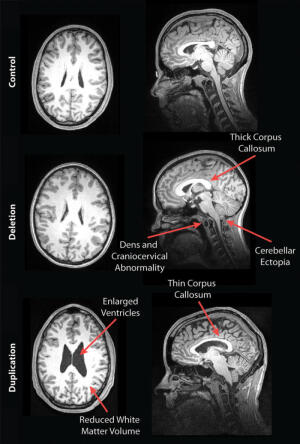by
Lauren Dubinsky, Senior Reporter | August 15, 2017
MR imaging might one day play an important role in identifying autism patients who require urgent intervention.
Autism spectrum disorders affect over 3.5 million people in the U.S., according to the Centers for Disease Control and Prevention. Many of them present with abnormalities at a specific site on the 16th chromosome.
Those with deletions of a small piece of chromosome usually present with brain overgrowth, developmental delays and a elevated risk of obesity. Those with duplications tend to have smaller brains and lower body weight and developmental delays.



Ad Statistics
Times Displayed: 172682
Times Visited: 3120 For those who need to move fast and expand clinical capabilities -- and would love new equipment -- the uCT 550 Advance offers a new fully configured 80-slice CT in up to 2 weeks with routine maintenance and parts and Software Upgrades for Life™ included.
A team of researchers at the University of California, San Francisco and four other sites performed structural MR exams on 79 deletion carriers, 79 duplication carriers and 64 unaffected family members, and 109 individuals in a control group.
All of the participants completed a battery of cognitive and behavioral tests, and neuroradiologists evaluated the MR images for development-related abnormalities.
They uncovered significant differences in the brain structures of the deletion and duplication carriers compared to non-carriers. For example, the fiber bundle that connects the left and right sides of the brain was thicker in the deletion carriers and thinner in the duplication carriers, compared to the control group.
The deletion carrier also appeared to have features of brain overgrowth with the cerebellum extending toward the spinal cord. The duplication carriers had a lower volume of white matter and large ventricles, which are signs of brain undergrowth.
The team then compared the cognitive tests to the imaging findings, and found that the deletion carriers experienced poor daily living and communication/social skills compared to those without these radiological abnormalities.
Duplication carriers with less white matter and corpus callosal volume, and larger ventricles, had lower full-scale and verbal IQ scores compared to duplication carriers without those findings.
“Often studies like this focus on high-functioning individuals, but this was an ‘all-comers’ group,” Dr. Elliott Sherr, head of the Brain Development Research Program at UCSF," said in a statement. "When you look at a broad range of people like this, from developmentally normal to more significantly challenged, you’re better able to find these correlations.”

